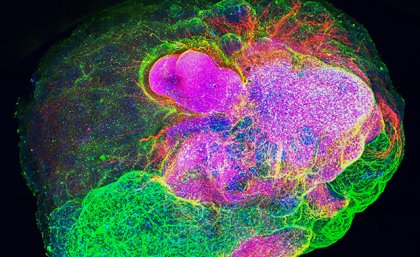
Brain tissue grown in a laboratory by University of Queensland researchers will be used to test a treatment for a rare disease in children and help unlock therapies for a range of neurological disorders.
Professor Ernst Wolvetang and his team at UQ’s Australian Institute for Bioengineering and Nanotechnology (AIBN) have secured almost $1 million from the Medical Research Future Fund (MRFF) to test gene therapies for children with a specific type of Hereditary Spastic Paraplegia (HSP).
HSP Type 56 (SPG56) is a degenerative brain disease that causes children to lose the ability to sit, stand, walk, or talk and there is currently no cure or treatment.
Professor Wolvetang hopes to find one, by testing gene therapies for the first time on patient-derived organoids - tiny, synthetic organs grown from a patient’s own cells.
“This testing will help us create a pathway to faster, more accurate treatments for children with SPG56 and other forms of HSP,” Professor Wolvetang said.
“We will test whether gene therapy is safe and effective in brain organoids, which have the same genetic make-up as the patients we aim to help.
“Because we have hundreds of brain organoids from each individual growing in the dish, we can systematically test the best therapy approaches without risking harm to the patient.”
 Professor Wolvetang’s AIBN research group is renowned for its work growing organoids and using them to try and understand diseases and human development.
Professor Wolvetang’s AIBN research group is renowned for its work growing organoids and using them to try and understand diseases and human development.
The SPG56 project will be the first time in Australia that brain organoids have been used to test the safety and efficacy of a gene therapy approach for HSP.
Professor Wolvetang said it may help encourage change in the regulatory approval process, which requires extensive testing in animals.
“We hope pre-clinical testing of the efficacy and safety of our methods in patient-specific brain organoids will enable more rapid progress towards human trials,” he said.
“Once we demonstrate the power and accuracy of this approach for one genetic disease, it should open the door for testing therapies for a range of other conditions.”
Images and video available via Dropbox.
Image above left: Professor Ernst Wolvetang
Media: AIBN Communications, Alex Druce, a.druce@uq.edu.au, +61 447 305 979; UQ Communications, communications@uq.edu.au, +61 429 056 139.










